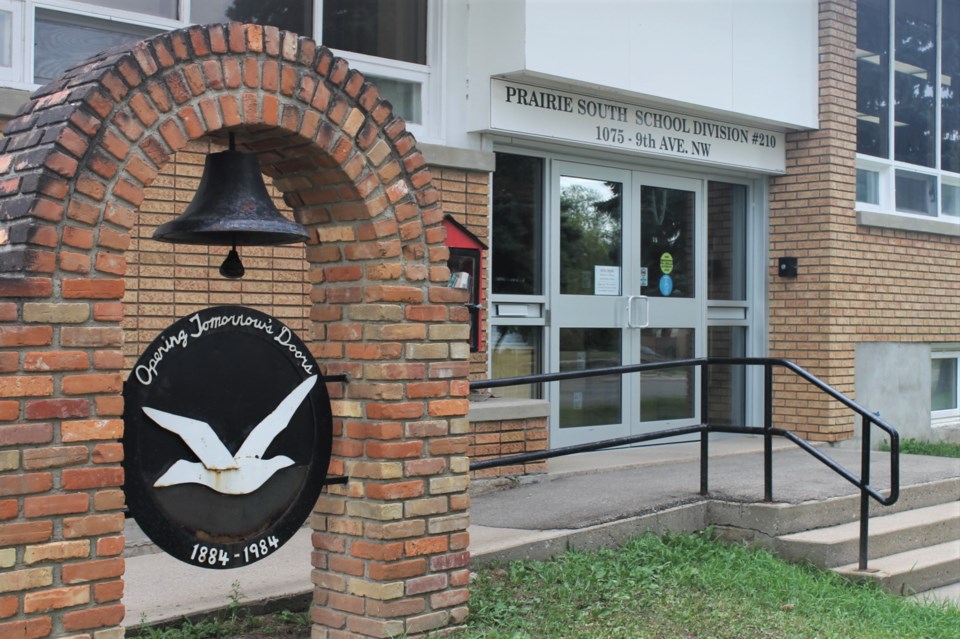Prairie South School Division is promoting a “Literacy Call to Action” to ensure its youngest students most affected by the pandemic have the resources to rebuild their reading skills.
The Ministry of Education announced last May that school divisions should focus on reading, learning response, and mental health and well-being for this school year. This was due to the shutdown in March 2020, which negatively affected students’ academic abilities since they lost 3.5 months of instruction.
Prairie South presented information about the division’s mental health initiatives during the December 2021 board of education meeting. Division staff presented its reading initiatives during the recent February meeting.
Reading data from January 2020 showed students in Grade 1 had reading proficiency levels of 82 per cent, while those same students had proficiency levels of 58 per cent after entering Grade 2 in September 2020, explained Amanda Olson, superintendent of learning.
Furthermore, reading data from November 2019 showed that students in Grade 2 had reading proficiency of 76 per cent, while in November 2020, those same students — now in Grade 3 — had reading proficiency of 56 per cent.
“At that time, we didn’t have results for our Grade 1 students, but we assumed that the profile would be very similar,” she said.
After reviewing November 2020 data, administration issued the Literacy Call to Action in January 2021. While there was a significant decline in overall proficiency, the division office knew that great things were happening in classrooms, Olson continued. While the loss of reading proficiency was not surprising, it still required action.
This call to action focused on supporting schools already engaged with reading, including providing information, resources, professional development, and best practices.
From January to June 2021, the division encouraged schools to focus on their Grade 2 students, who were in Grade 1 during the March 2020 shutdown, Olson said.
Schools were also encouraged to:
- Increase literacy instruction
- Have teachers to refer to the provincial resource SaskReads
- Protect student support time for interventions
- Read more throughout the day, even for 10 minutes
- Ensure students read in the right instructional groups
- Encourage teachers to access a Reading Continuum resource program
“Sometimes we get a little bit worried that students don’t have certain skills, so it’s always good to go back and remind ourselves that maybe those skills aren’t developmentally appropriate, actually,” Olson said. “Some students may have them and some students may not and that’s OK.”
In spring 2021 the ministry created its provincial interim education plan with the three priorities. While reading was in PSSD’s recovery plan, administration decided that focusing on mental health came first.
“As (education specialist) Kevin Cameron tells us, the connection gap needs to be fixed before we can fix the learning gap, so we spent a fair bit of time focusing on that at the beginning of the (2021-22) year,” said Olson.
In November 2021, the division collected reading information from students in grades 2 and 3. That data found 68 per cent of Grade 2 students and 65 per cent of Grade 3 students were reading at or above grade level.
In comparison, those numbers were 76 per cent and 77 per cent, respectively, in November 2019.
While the November 2021 data is lower than in 2019, it’s still higher than spring 2020, which is positive, Olson said.
During 2020-21, PSSD focused on cohorting classes, safety and cleaning, scheduling intervention groups differently, changing how students learned in the classroom, supporting students and staff in isolation, and helping students who learned virtually or from home.
For 2021-22, the division focused on connection and reconnection, helping students learning virtually or from home, supporting those in isolation, and dealing with attendance issues.
From January to June, PSSD is encouraging schools to focus on Grade 3 students, since they missed important instruction at the end of the 2019-20 year, Olson added.
The next PSSD meeting is Tuesday, March 1.




